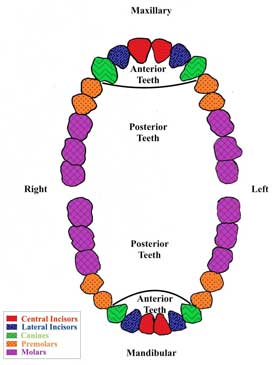|
View in browser: https://www.crime-scene-investigator.net/newsletter/0423.html
|
||
|
APRIL 2023 | ||
|
Welcome to the April 2023 Crime Scene Investigator Network Newsletter
| ||
|
This Month's Featured Resource on the Crime Scene Investigator Network Website
|
||
 Just as today's law enforcement officer has learned to look routinely for fingerprints to identify the perpetrator of a crime, that same officer needs to think routinely about evidence that may contain DNA. Recent advancements in DNA technology are enabling law enforcement officers to solve cases previously thought to be unsolvable. Today, investigators with a fundamental knowledge of how to identify, preserve, and collect DNA evidence properly can solve cases in ways previously seen only on television. Evidence invisible to the naked eye can be the key to solving a residential burglary, sexual assault, or child's murder. It also can be the evidence that links different crime scenes to each other in a small town, within a single State, or even across the Nation. |
New CSI and Forensic Job Announcements
|
|
|
The most comprehensive listing of Crime Scene Investigation and Forensic To be notified of job openings as they are posted, follow us on Twitter: Job Posting Alerts |
||
|
Crime Scene Specialist
Goldsboro Police Department, Goldsboro, North Carolina, USA Final Filing Date: July 25, 2022 Documents crime scenes through the use of detailed notes, photographs, and sketches. Develops, photographs, and lifts latent fingerprints found at crime scenes. Identifies, photographs, and collects biological evidence found at crime scenes. <View complete job listing> |
||
|
Forensic Unit Supervisor
Culver City Police Department, Culver City, California, USA Final Filing Date: May 5, 2023 Selects, trains, evaluates and supervises the activities of assigned personnel. Assists staff with workload when necessary. Responds to crime scenes to collect and preserve evidence or provide technical assistance in these activities, this includes taking photographs, processing and lifting latent prints, and other processing procedures. <View complete job listing> |
||
|
Crime Scene Specialist
Round Rock Police Department, Round Rock, Texas, USA Final Filing Date: May 9, 2023 Documents the scene using photographic and video equipment; attends and photographs autopsies; organizes photographs taken by others; maintains the integrity of digital images. Processes scenes for latent prints; properly identifies and collects items of evidence; maintains chain of custody. <View complete job listing> |
||
|
Crime Scene and Evidence Technician
St. Cloud Police Department, St. Cloud, Florida, USA Final Filing Date: Continuous Examines crime scenes to document, preserve, collect, photograph, video and identify physical evidence. Recovers fingerprints from crime scenes and evidence submitted. Receives and account for criminal evidence and impounded, lost, and abandoned property, process evidence and property. <View complete job listing> |
||
 |
||
|
Latent Print Specialist I
Charles County Sheriff's Office, La Plata, Maryland, USA Final Filing Date: May 1, 2023 Examines and identifies latent prints and provides expert testimony in court proceedings. Performs work relative to the identification of latent prints within the Forensic Science Section and provides technical guidance to other personnel involving latent print development, collection, and identification activities. <View complete job listing> |
||
|
Forensic DNA Scientist Trainee
Pennsylvania State Police, Greensburg, Pennsylvania, USA Final Filing Date: May 1, 2023 Participates in structured training and practical exercises designed to develop proficiency in performing chemical and biological analysis and comparison of human DNA samples and evidence gathered and submitted by law enforcement authorities. <View complete job listing> |
||
|
Digital Forensic Examiner
Charles County Sheriff's Office, La Plata, Maryland, USA Final Filing Date: Open until filled Provides technical support for the identification, protection, preservation and collection of evidence at complex or major crime scenes. Conducts comprehensive forensic examination of computers, cell phones and other digital media. Extracts, stores and analyzes data for evidentiary value in all types of investigations. <View complete job listing> |
||
|
Forensic Technician/Photographer
Broward County Office of Medical Examiner and Trauma Services, Fort Lauderdale, Florida, USA Final Filing Date: Continuous The Forensic Technician/Photographer handles medical instruments, operates equipment including digital cameras and specialized photographic equipment and techniques; processes and preserves pictures of autopsies and death scenes; preserves evidentiary images for use in investigations and/or as evidence in court. Photographs death scenes, autopsies, external examinations, toxicology photography as needed, and disasters. <View complete job listing> |
||
|
Search for more job listings in Crime Scene Investigations and Forensics To be notified of job openings as they are posted, follow us on Twitter: Job Posting Alerts |
||
|
Other Resources on the Crime Scene Investigator Network Website
|
||
|
Not Subscribed to this Newsletter?
|
||
|
If you are not subscribed to this newsletter, you may subscribe with this link: SUBSCRIBE via email |
||
|
To Unsubscribe
|
||
|
To unsubscribe from future e-mail alerts, please click here: UNSUBSCRIBE Copyright ©2023 Crime Scene Resources, Inc. Crime Scene Investigator Network |



